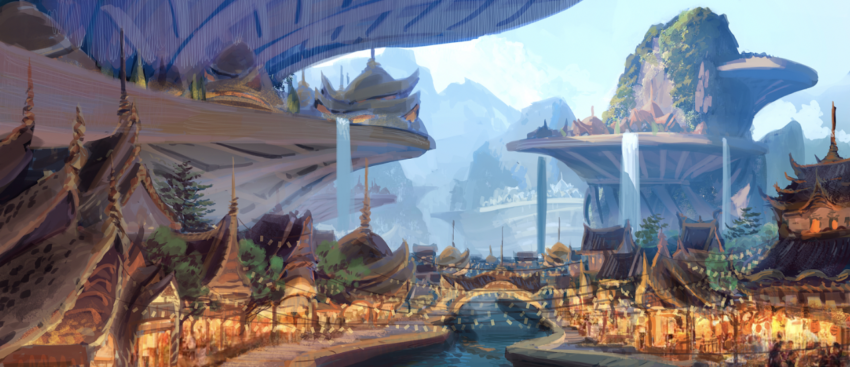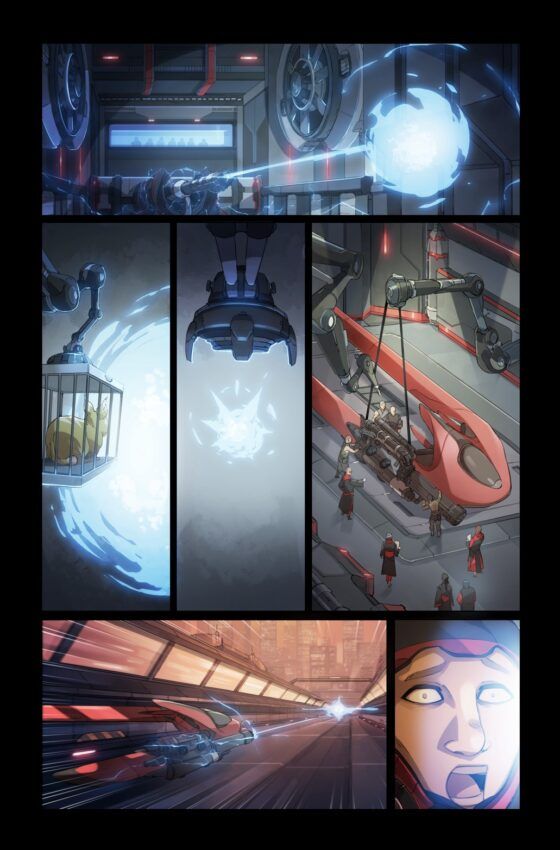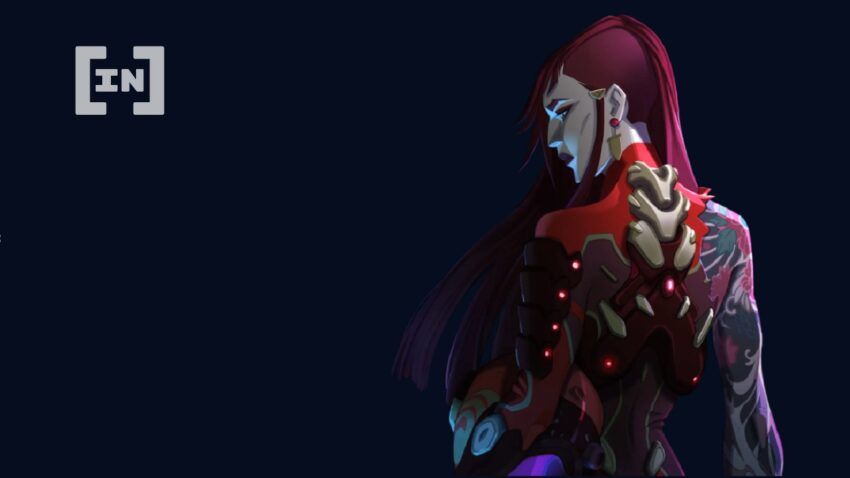NFT Projects: So what makes a good story-driven NFT project? Follow the next generation of storytellers into Web3, and you’ll discover the future of entertainment, writes producer and Web3 degen Bryce Anderson.
The NFT storytelling evolution is here. Can you hear the meta-shifting?
NFT projects: Looking for the next big thing
From the moment I bought my Bored Apes in April 2021, I’ve been waiting for the NFT storytelling revolution. As a movie executive, I’ve spent the last 11 years reading hundreds of scripts, books, and articles looking for The Next Thing. That next big, multiplatform franchise like Pokémon, Star Wars, or Teenage Mutant Ninja Turtles. Believe me when I tell you: It is only a matter of time before a behemoth IP is launched from inside of Web3.
NFTs are special. Underneath the bad press and scams and stupid pictures of animals there’s a fundamental organizing technology that changes how people interact. Right now NFTs are used for art, collectables, and community projects. Digital tokens will eventually become the invisible back-end of countless boring bureaucratic processes. But the greatest innovation of Web3, the disruptive promise, is that it allows us to easily formalize relationships that for the history of the world have only been casual.
NFT projects: The evolution of fandom
Fandoms and fan communities have existed for years. They coalesce around something after it is created. An author writes a book, a director shoots a movie, and the people who like it get together so they can talk about it. Fandoms are great. They are fun. They build community.
But ultimately fans are just avid consumers. Even when they are the primary marketing vehicle for a product, even when they contribute directly to a product’s success, the relationship between an entity and its fans only goes one way. They don’t share the credit. They don’t share the revenue. And,tThey don’t have a defined path to contribute meaningfully.
NFTs flip this script and work backward. Thousands of people can organize around an idea, promote an experience, and then participate in that product’s success. They don’t have to start a company. They don’t have to know everyone involved. And, they just have to buy a token and dive in. A franchise will be built out of content created by its own fanbase because that fanbase now has a way to monetize itself.
This is the promise of NFTs. This is the storytelling revolution.
NFT projects: Building Story Universes
The next evolution of Web3 will add complexity to what we’ve seen so far. The NFT projects that dominated the 2021 cycle tended to be light on story. This is not to discount their power as pieces of branding. But as a film producer, pure branding is not enough. It is difficult to make a simple image a viable piece of global, long-form IP.
The new generation of projects, emerging now and over the next few months, are in pursuit of a loftier goal: The Story Universe.
Community-building and world-building are intertwined. It’s a fluke we have as humans. Inside jokes and slang become shared stories and history, and eventually the basis of entire cultures. In Web3, creators need to provide their communities with enough specificity to attract fans, and enough license that those fans can create lore beyond the original vision. It’s like playing Dungeons &Dragons on a massive scale.
So, what makes a good story-driven NFT project? Here are a few top traits to look for, and a few questions to ask when evaluating a project:
1) It knows the difference between lore and narrative
Story is a broad term. Conceptually, all story breaks down into two parts: narrative and lore.
Lore is the structure of the world and the culture. Narrative is a specific sequence of events, following particular characters. Lore is the foundation and narrative is the house.
Lore has obvious long-term value in Web3. It’s the essence of branding, and with strong, fully realized lore, fans will be inspired to contribute their own narratives to a Web3 project.
But very few Web3 projects attempt narrative. This is too bad, because narrative stories are the most effective way to introduce lore and set the rules of a story world. Narratives are also better at entertaining and recruiting audiences. It’s a huge blindspot, and an opportunity for projects hoping to compete in media creation. Narrative pulls people in, and good lore and narrative support each other.
The most successful NFT projects will build compelling, intricate, inspiring worlds that inspire their users to contribute narratives within the framework lore. They’ll provide the sandbox and invite users to build the sandcastles.
2) The world has a singular organizing concept
The base organizing principle of any story universe is the thing that makes it unique. It also usually provides an interesting conflict. Too often, creators mistake genre for concept. A collection of beautifully illustrated elves and dwarves is a genre. A series of powerful rings that bind all the people of Middle Earth is a concept. We have seen many web3 projects embrace specific genres, but very few with deeper conceptual development. This is changing.
3) The world contains multiple characters with different, compelling perspectives
Often, NFT projects build an entire collection around a single character. But a character is just one perspective of the world they inhabit. Though they may be interesting, one character is not enough to carry an entire story-universe.
Story-universes that struggle to define compelling characters are probably struggling with concept. If your fundamental organizing principle is interesting – the characters that exist within that paradigm will be inherently interesting. You can check if your world is interesting by discarding all of the characters you thought up already and inventing new characters to tell stories about instead. If the world is still interesting, you’re on the right track.

4) If the project succeeds, will this team know how to execute?
Creating content is easy. Creating good content is hard. Dozens of NFT projects claim to be making movies, TV, or videogames. What sets this project apart? Who are the founders? What experience do they have? Would you trust them with creative differences and million-dollar budgets? Great artwork can come from anywhere, but it usually comes from people who know what they’re doing.
5) Is the team exclusively using NFT sales to finance their project?
Web3 presents creatives with exciting new ways of accessing capital to pursue their creative projects. This is great, but sometimes creators get blinded by the numbers and make less-than-wholesome decisions. Traditional finance models still exist. Ask if a team is pursuing Web3 just to finance their project, or if Web3 offers other advantages that make it the best fit for their project.
6) Do they share the IP?
The NFT storytelling revolution exposes a gaping hole in US Copyright law. Current systems do not account for how users and creators in Web3 want to use and trade their content. Many projects are experimenting with different methods to creatively work within the existing system, and none of these methods have been tested in court.
You should thoroughly read the terms and conditions of any project you want to join. Some creators will choose to use their fans to launch their personal project, and others will share their IP to launch a community project. Be sure you understand the terms before jumping in. More importantly, be sure the creators are proactively considering their stance on copyright and licensing, as these details will have major effects on projects long term.

7) Do you like it? Does it surprise you?
The best judge of content is your gut. Don’t dedicate your time and energy to something that doesn’t make you happy or keep you interested. The best stories hook you behind the navel and pull. They choose you and don’t let go.
NFT projects: The future of entertainment is collaborative
With each project we support, we’re looking to build the future of entertainment. Working together with fans to take stories beyond their traditional limits. And looking at ways to reward fans’ loyalty in previously impossible ways.
Web3 is already full of creative projects telling compelling stories. I expect that’s only going to increase as creatives from other industries realize the possibilities of this nascent space and embrace them. The future of entertainment isn’t about telling new stories to people — it’s about telling new stories with people.
About the author

Bryce Anderson is the production executive at Clubhouse Pictures and the project lead of Omega Runner, a Web3 worldbuilding project launching soon.
Got something to say about NFT projects or anything else? Write to us or join the discussion in our Telegram channel. You can also catch us on Tik Tok, Facebook, or Twitter.
